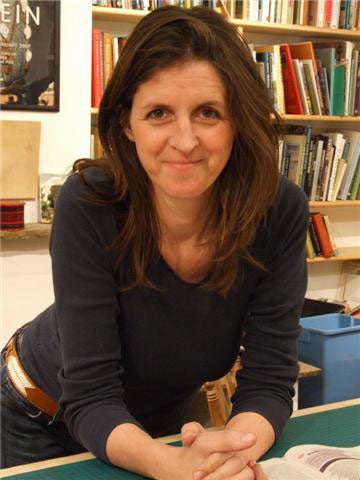25 years on: you can’t take the Emma out of Emma Bridgewater

Emma Bridgewater always knew that her now iconic British pottery company, which this month celebrates its 25th anniversary, was going to be a success. “If you think, oh I’ll have a little, tiny craft pottery, then that’s what you get. You don’t grow by accident,” she told me breezily over the phone last week. The idea came about while she was looking for cups and saucers for her mother’s kitchen and found nothing suitable. “The china was full of irrelevant formal stuff whereas her kitchen was resolutely informal,” she explains. Her mother, who was left permanently brain-damaged by a horse-riding accident in 1991, has been her biggest inspiration. “There wasn’t a question of a set of anything and that was and is my constant reference. Her style is my touchstone for the style of the business. That’s been absolutely crucial to the success.”
Search for the perfect furniture with The Independent house and home database, powered by mydeco.
Emma Bridgewater pottery is made by hand by a team of 150 skilled workers based at the Emma Bridgewater factory in Stoke-on-Trent. The team produces over 5,000 pieces of pottery a day and it is the largest company to make all of it by hand in Britain. Each piece takes four days to make and every spot, star or design, created personally by Emma and her husband Matthew Rice, has been hand painted onto the item to ensure that each one is unique.
“Stoke really hit me between the eyes,” says Emma, “I was really interested in the industrial heritage.” Her business is one of the few British businesses that has kept production in Britain and this, fumes Emma, “makes me hot with rage.” Today, she tells me, there are around 7,000 employed in the ceramics industry, whereas before there were tens of thousands. “Once the rush started, they couldn’t get out fast enough.” Was it a cost issue? No, says Emma pityingly. “It was the failure of will, nerve, spine – absolutely hopeless!”
She is adamant that you should work with the craftsmen that live up the road from you. “These people have great skills, which really need preserving. It’s absolutely daft to assume that the first thing you should do is get on an airoplane and fly half way round the world.”
Her determination to keep production in Britain has made Emma Bridgewater, its factory and the skill of its workers stand out as a beacon of light in an industry which has increasingly sold out to manufacturers in the Far East. But it hasn’t always been easy and the company’s success can be attributed to Emma’s mettle – her own will, nerve and spine, if you like – and her ability to make tough decisions. A key part of this, she explains, has been keeping a foot outside Stoke. “It’s very tempting to consolidate the whole thing there. We did for a bit and it was deathly. It shouldn’t be production led. You’ve got to make the production do what the customer wants. That is so bloody vital. You need to keep your marketing hat on in a commercial office elsewhere, so you can make those hard decisions. The factory is a function of the business; it is not the driver.”
While Emma has clearly got the brains (and the balls) for business, a lot of it, she says, is down to luck. “I don’t claim enormous cleverness. I’ve never had the capital to invest in cup- making machines or robots that make plates. We took the line, let’s invest in people, let’s incentivize them to multi-skill across the factory, so that when things are tight, or we get a run on something, we can move people around.” It’s a formula that has clearly worked with the business now turning over close to £8 million – quite a growth since the first order of £600 came in all those years ago.
She is surprisingly humble about this success, getting quite choked up when she tells me how The Potteries Museum and Art Gallery of Stoke-on-Trent is honouring her 25th year in business with a retrospective – an endorsement she says “makes me feel quite peculiar” – and how a Royal visit to the factory earlier in the year “swept all of us up – it’s so glamourous that business of all the police escorts, uniforms, flashing lights and people waving flags. It was lovely.” The business itself is marking its 25th anniversary with a number of specially designed products, which can be found on its website.
But where lies the future for Emma Bridgewater? When I first started, she says, I assumed that, like many 80s businesses, I would build it up and sell it on – “I really set myself the challenge of doing it quicker and for more money than my dad had. I went through a stage of thinking, oh we’ll call it Bridgewater, we’ll step back from it, take the ‘Emma’ out of it and depersonalise it, but if you’re all the time mentally preparing for what we call ‘the event’, you’re thinking in totally the wrong way, which isn’t healthy for a business. I’ve done a complete about turn.”
So what do her children think about picking up the mantle? I would never force it on them, she says, but points out, “they might be grateful for the opportunity.” In the meantime though (“I’m only in my 40s”) Emma is staying at the helm - as the last 25 years have proven: you can’t take the Emma out of Emma Bridgewater.
Emily Jenkinson is interiors writer for furniture and interior design website mydeco.com.
Join our commenting forum
Join thought-provoking conversations, follow other Independent readers and see their replies
Comments